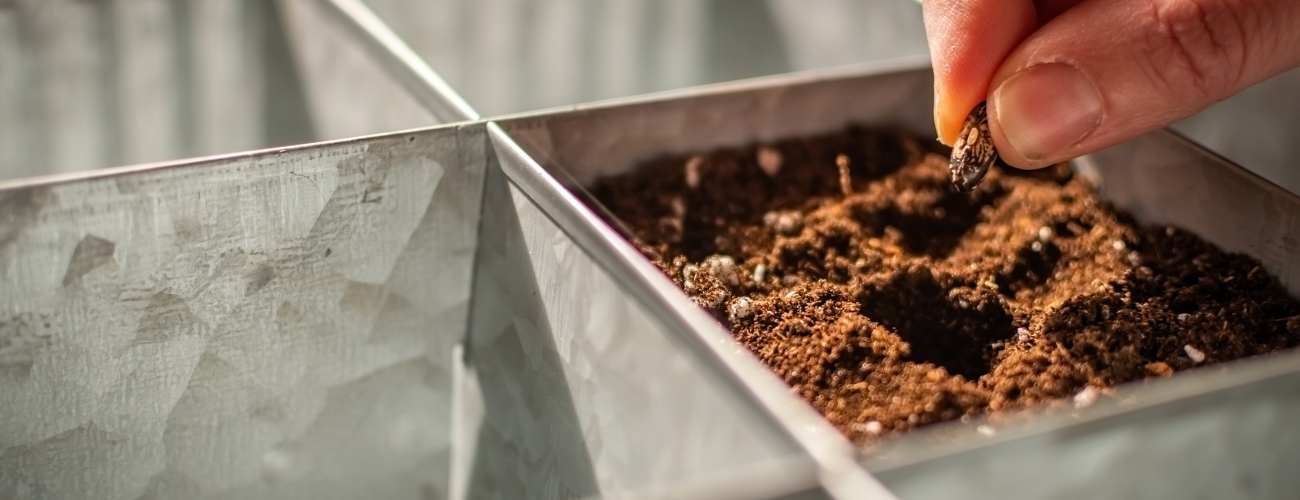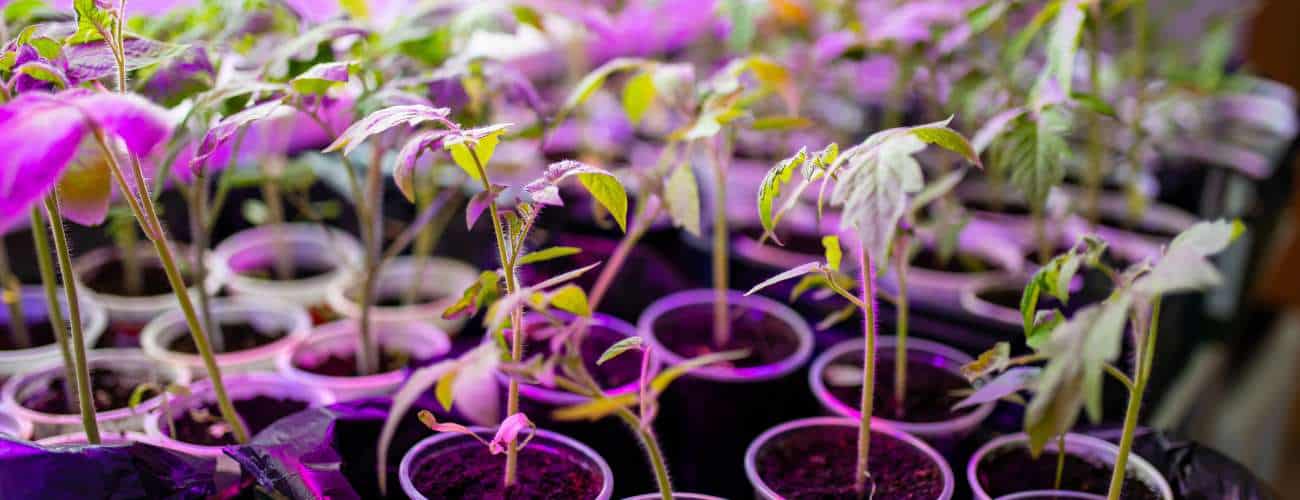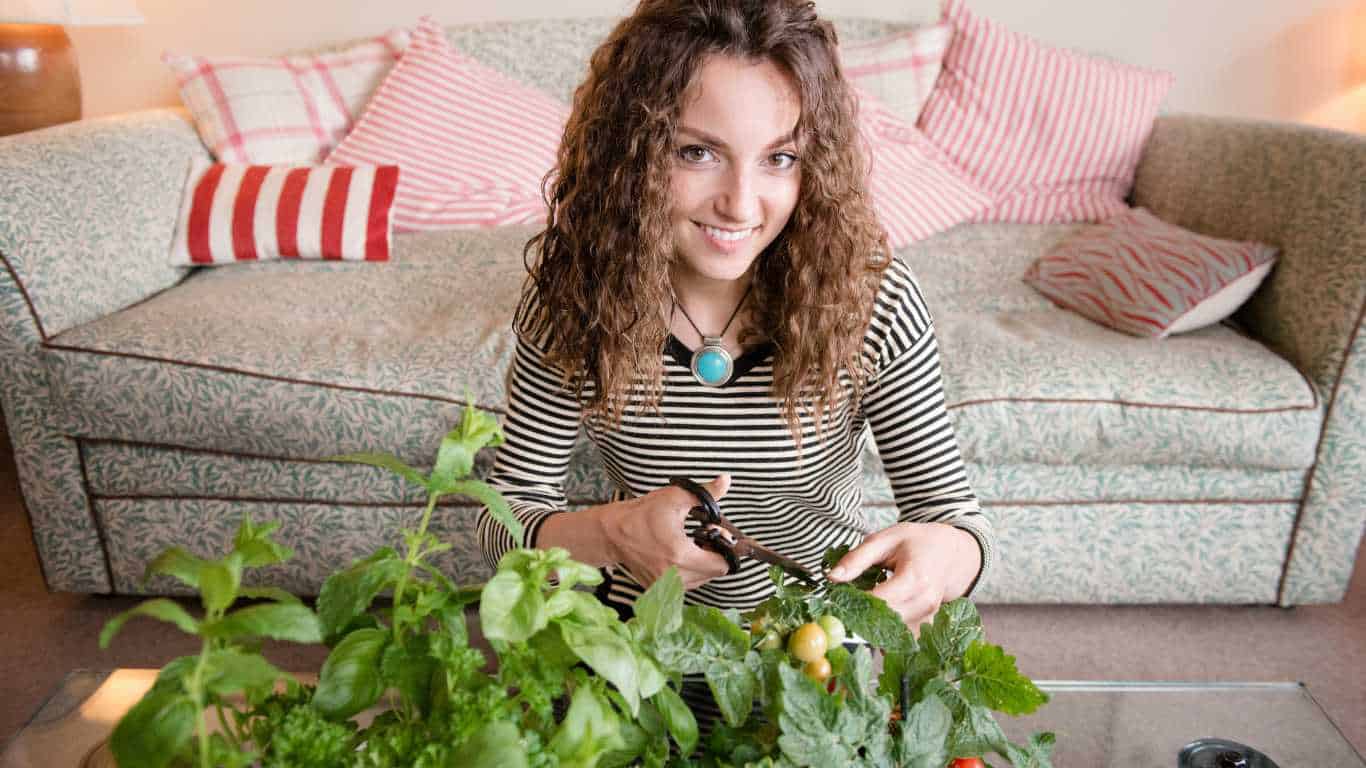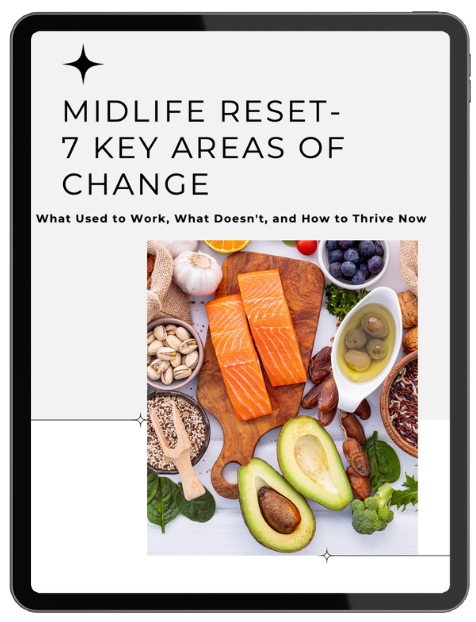Light is one of the most important aspects of growing strong and healthy seedlings.
There is a ton of information about grow lights and you quickly start asking yourself if you really need to purchase them. I have done a lot of research and talked to some experienced homesteaders to help you make the right decision based on your needs.
As a general rule, you need to get grow lights if you cannot achieve about 14-16 hours of light each day. This can be difficult to achieve even in a south-facing room. Therefore, you have to establish how many hours of natural light you can achieve as well as check the seed package which will tell you how much light your seeds require.
Let’s get into the details, so you can be confident in your decision if you really need to purchase grow lights or if sticking to natural light is going to be sufficient.
Grow lights or natural lighting for starting seeds indoors
First of all, you need to establish which room in your house gets the most sunlight. Perhaps, you have never thought about it too much, so you might want to get your compass out. Once you work out which room is south-facing you need to decide if the room is big enough for growing your seeds and plants.
It will really depend on your requirements and on the amount, you want to grow. Do you want to grow just a few tomatoes or do you want to grow a variety of produce to feed your family?
If you establish that your room is not big enough and you don’t have any other south-facing room, it would be very unlikely that you would get the required 14-16 hours each day. In this case, the decision should be to buy grow lights and I will go into more details regarding this at a later stage of this blog.
If you decide that your south-facing room is big enough for your indoor gardening venture, don’t assume you are avoiding buying grow lights just yet. I would recommend that you actually watch this room for a couple of days to establish how many hours of light you get.
The amount of light you get depends on various factors such as geographical location, time of year, and obstructions. You could also use a solar tracking app or website. There are various online tools and apps that can provide you with detailed information about the hours of sunlight your specific location receives throughout the year.
It’s important to research the specific requirements of the seeds you plan to grow. The seed packet often provides guidelines on light requirements. The number of hours of light that vegetable seeds require can indeed vary within different vegetable species. For example, tomato seedlings typically require around 14 to 16 hours while spinach only 10-12 hours.

In order to grow strong, healthy seedlings, it’s crucial to provide the proper lighting for them right from the start. So, it is important to consider all these factors carefully.
If your findings are that your room will provide sufficient lighting, congratulations you have just saved yourself the money and time spent on grow lights.
However, don’t worry if you find out that you need to purchase some grow lights. It will be a whole new adventure to delve into!
Also, don’t forget that you can get the best out of both worlds! Combining natural sunlight with grow lights can be a smart strategy for indoor gardening. By harnessing the power of natural light during the day and supplementing with grow lights when needed, you can strike a balance that promotes healthy plant growth while conserving energy.
This approach not only reduces electricity costs but also provides your plants with the benefits of both natural and artificial light, ensuring they thrive in the most efficient and sustainable way possible.
Advantages of grow lights
I talked to my friend who is experienced in growing produce with grow lights and asked him if the expense of buying grow lights is worth it. His response was without hesitation: “I would say yes, totally worth it!”
And I am of course not surprised now at all after learning about all the benefits grow lights bring to the table:
- Year-Round Growth: Grow lights enable year-round gardening, extending growing seasons and defying weather limitations, making it especially valuable in colder climates.
- Controlled Environment: Grow lights provide precise control over light intensity, duration, and spectrum, ensuring ideal conditions for plant growth and development.
- Consistent Results: Indoor plants under grow lights grow uniformly, reducing leggy growth and promoting healthier, more robust plants.
- Supplemental Light: They supplement natural sunlight, compensating for cloudy days or short daylight hours, ensuring a steady light supply.
- Customized Spectrums: Grow lights can be tailored to provide the specific light spectrum needed for various plants at different growth stages.
- Pest and Disease Management: Controlled environments lower the risk of pests and diseases, simplifying management and prevention.
- Energy Efficiency: Modern LED grow lights are energy-efficient and produce less heat, reducing energy costs and maintaining stable indoor temperatures.
- Space Optimization: Grow lights allow maximum space utilization, ideal for vertical gardening and small indoor areas.
- Early Seed Starting: Perfect for starting seeds indoors, ensuring young plants are strong before transplanting outdoors.
- Extended Harvests: Grow lights enable year-round harvesting, ensuring a continuous supply of fresh produce or flowers, regardless of seasonal variations.
I bet you are ready to get some grow lights after learning about these 10 benefits.

I encourage you to check out my blog on how to start seeds indoors in an egg carton, if you would like to grow your seeds sustainably.
Which grow lights should I get?
Once you start researching grow lights, it can get confusing pretty quickly as there are so many options.
When choosing grow lights for starting seedlings, you’ll want to consider factors such as the type of plants you’re growing, the available space, your budget, and the control you need over light intensity and spectrum.
Here are some considerations which can help you with your decision:
Light Output: Ensure the light output is sufficient for the number of seedlings you plan to grow and the size of your growing area.
Light Duration: Seedlings generally require 14-16 hours of light per day. Ensure your light source can be adjusted to accommodate this duration.
Space: How big are they? Consider the space you have available. Some lights may require more vertical clearance than others.
Energy Efficiency: Opt for energy-efficient options, as they can reduce operating costs over time.
Adjustability: If you’re growing a variety of plants with different light requirements, a grow light with adjustable intensity and spectrum can be advantageous.
Ultimately, the choice of grow light should align with your specific needs and gardening goals. LED grow lights are often a popular choice for starting seedlings due to their versatility, energy efficiency, and customizable spectrum options.
I also like Fluorescent Grow Lights as they are cost-effective, energy-efficient, and produce minimal heat. Ideal for seedlings and young plants!



